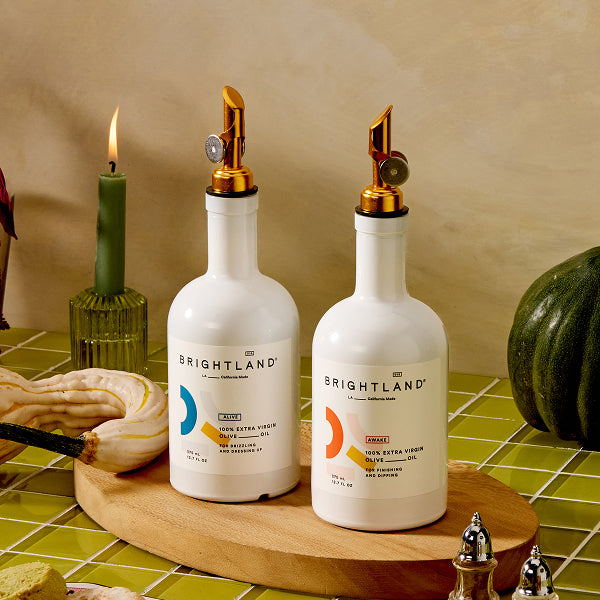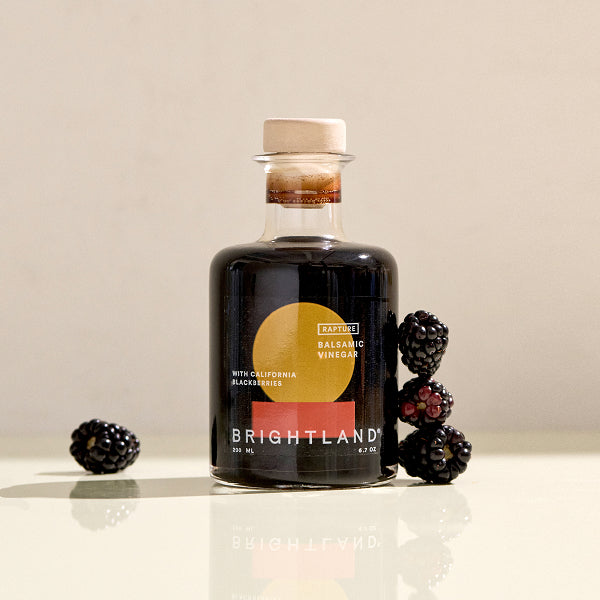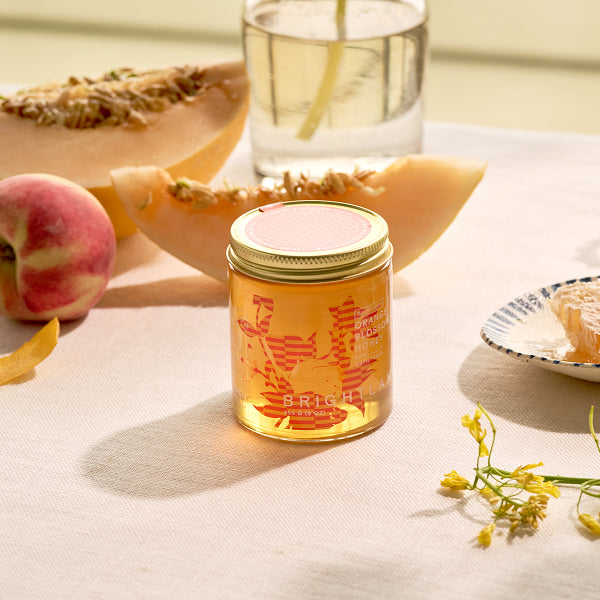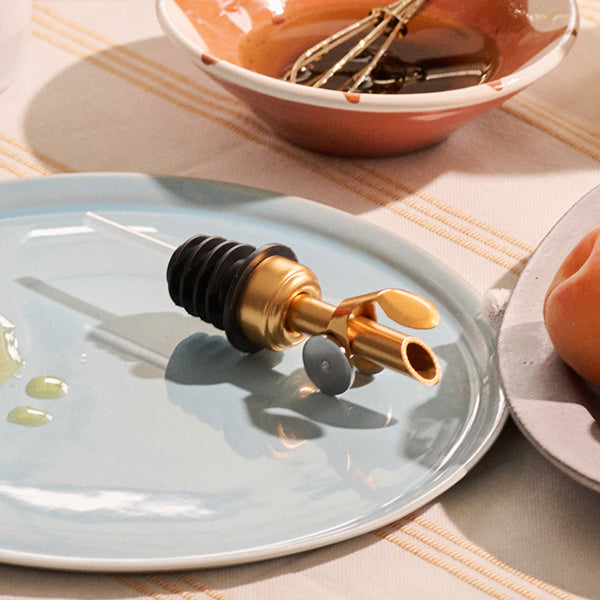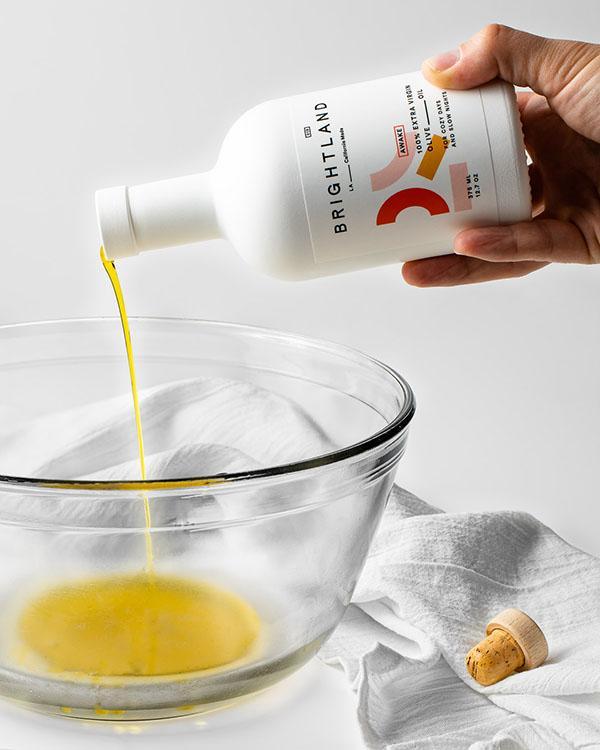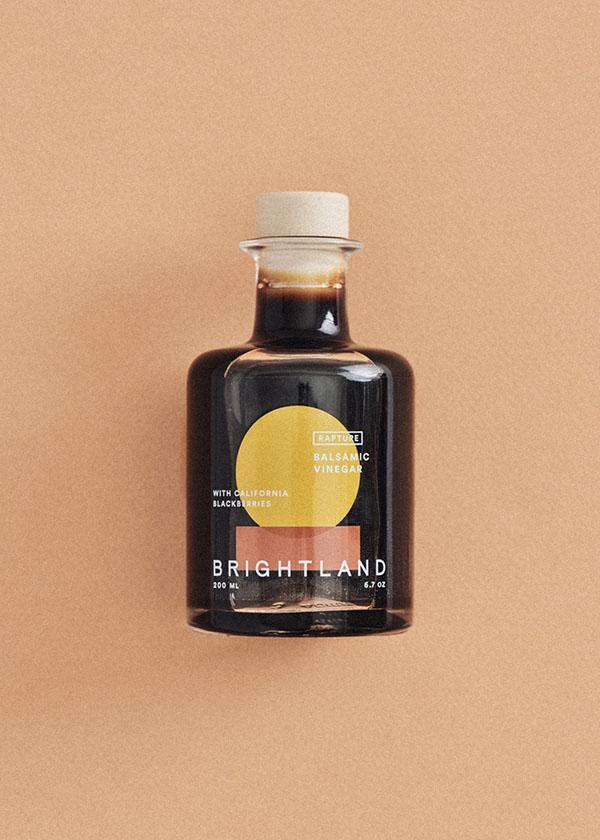Shopping for olive oil can be confusing given the similarity of the labels (just what is the difference between extra virgin olive oil and virgin olive oil, anyway?). While the names may seem very similar, it is important to remember that each label tells you something about the production method, acidity content and flavor of the olive oil no matter how similar it sounds. Below, we break down exactly what each olive oil label means and explain how each olive oil’s characteristics differ from each other.
[close type="rte"] [open type="rte"]Before we begin, an important note: Olive oils sold in the U.S. sometimes use different terminology than olive oils sold internationally. The U.S. Department of Agriculture set up its own grading system for olive oil before the International Olive Council (IOC) came into existence. Today, the USDA continues to use its own system for olive oils sold in the U.S., while international olive oil-producing countries observe the standards set by the IOC. Thus, some of the terms listed below are common abroad, but you might not have encountered them when buying U.S. olive oil.
[close type="rte"] [open type="images" count="1" small="true"]
Extra Virgin Olive Oil
This is the least refined olive oil and the one most similar to the oil that comes straight out of the olive fruit. Extra virgin olive oil is cold pressed and is not treated with heat, chemicals or other added refining processes or products. There are technically two subcategories of extra virgin olive oil: premium extra virgin olive oil and extra virgin olive oil. Premium extra virgin oil has the lowest acidity of all the olive oils, as low as 0.225 percent. Extra virgin olive oils contain slightly more acidity. IOC regulations stipulate no more than 0.8 percent acidity, while other regulations allow up to one percent. (Learn more about what makes olive oil extra virgin.)
Regardless of which type of extra virgin olive oil you buy, you will get an olive oil with a superior taste that contains the fruity, peppery notes of the natural olive fruit. It may range from pale yellow to bright green in color depending on what types of olives are harvested. While extra virgin olive oil is suitable for just about all cooking and baking applications, it really shines in uncooked dishes such as dips and salad dressing, which show off the natural flavor of the unheated olive oil.
Shop Extra Virgin Olive Oil[close type="rte"] [open type="rte"]Virgin Olive Oil
Virgin olive is also unrefined, like extra virgin olive oil, but it is more acidic. There are three subcategories of virgin olive oil: fine virgin olive oil, virgin olive oil and semi-fine virgin olive oil. Fine virgin olive oil can have an acidity level no higher than 1.5 percent. It is the closest to extra virgin olive oil in terms of taste and performance. Virgin olive can have an acidity level no greater than two percent, while semi-fine virgin olive oil can have an acidity level no higher than 3.3 percent. Virgin olive oil is rarely sold in grocery stores, at least in the U.S., so if you have never heard of this category of unrefined oil, that is probably why. (Most grocery store stocks go straight from extra virgin olive oil to regular olive oil.)
[close type="rte"] [open type="rte"]Refined Olive Oil and Pure Olive Oil
Not all olive oils are high enough quality to be fit for human consumption without further processing. Sometimes, the unrefined olive oil has poor flavor, bad smell and/or an acidity level greater than 3.3 percent, so it needs to be changed before it can be sold. These olive oils will be processed and refined using a variety of methods, including heat, chemicals and filtration. Only one type of refinement may be used, or multiple methods may be used in conjunction on the same batch of oil.
These olive oils are sold under a variety of labels, including “refined olive oil,” “pure olive oil” and just plain “olive oil.” In many cases, these olive oils are a combination of refined and extra virgin olive oil, usually around 85 percent refined oil and 15 percent virgin or extra virgin olive oil. The extra virgin olive oil lends flavor and aroma to the refined oil, which is usually very light in color and has a very mild (if any) taste and smell. Refined oils usually have an acidity level no greater than 1.5 percent. Refined olive oil withstands heat well due to the refining processes it has undergone, so some brands sell it under a “cooking olive oil” label.
[close type="rte"] [open type="rte"]Extra Light and Light Olive Oil
This is a specific type of ultra-refined olive oil that is worth calling out on its own due to its prevalence. The name refers to the color and flavor of the olive oil, which is usually a very pale yellow and has a neutral taste similar to canola oil (another super-refined oil). Due to the refined processes, extra light and light olive oils have a very high smoke point, making them suitable for cooking at high temperatures. The neutral taste also makes it a good choice for baking recipes that call for some type of oil. However, if you are looking for the classic taste and aroma that is associated with olive oil, then you will be better off choosing extra virgin olive oil, as extra light olive oil lacks many of the classic olive oil characteristics.
[close type="rte"] [open type="rte"]Olive Pomace Oil
Most olive oil is cold pressed via a machine, but this process does not remove all of the oil in the olive fruit. About five to eight percent of the oil is still left over in the remaining olive pulp, also called “pomace.” In order to remove the remaining oil from the pomace, manufacturers use a combination of chemical solvents and very high heat. The resulting oil is sold as olive pomace oil, and it lacks the distinct taste, color and smell of extra virgin olive oil. This cheap byproduct is rarely sold in grocery stores and is often only available for commercial purposes.
[close type="rte"] [open type="rte"]Flavored Olive Oils
Flavored olive oils are infused with various ingredients to add a new taste to the oil itself. For example, at Brightland, we sell lemon, chili, garlic and basil olive oils to satisfy a variety of palates and complement a wide range of recipes. These flavored olive oils add even more tasting notes to a dish without having to add more ingredients. Make sure to read the label carefully so you know whether the olive oil base is refined or extra virgin. We always use extra virgin olive oil at Brightland, but that may not be the case for all brands.
[close type="rte"] [open type="rte"]How to Choose Types of Olive Oil
Which type of olive oil you should select depends on what you intend to use the oil for. Here a few of the most common scenarios, and which olive oil you might select for each one:
[close type="rte"] [open type="images" count="1" small="true"]
If You Are Using the Oil for Cold Dishes
Whether it is dipping oil for bread or a dressing for salad, any dish served cold or at room temperature will really show off the olive oil’s natural texture, flavor and aroma. Thus, extra virgin olive oil is your best bet in these scenarios. The delicious taste, low acidity and pleasant texture will enhance the flavor and experience of your dishes and elevate an already tasty meal. In fact, once you start making your sauces and dressing from scratch using high-quality olive oil, you might find it hard to go back to the bottled kind found at the store.
[close type="rte"] [open type="rte"]If You Are Using the Oil for Medium Heat Cooking
Whether you are sauteing meats or roasting vegetables, extra virgin olive oil is great for medium heat cooking. Its smoke point is suitable for these lower heat applications, and it will still bring excellent taste and flavor to the dish, enhancing it rather than simply helping it to cook without sticking. Indeed, olive oil’s cooking versatility is part of what makes it such a pantry staple, and explains why so many cooks reach for it first when putting together a meal.
[close type="rte"] [open type="images" count="1" small="true"]
If You Are Using the Oil for High Heat Cooking
For frying foods, you need an oil with a high smoke point, since the normal temperature range for deep frying is usually around 320 and 356 degrees Fahrenheit — and the fresher the olive oil, the higher the smoke point. Because our Brightland olive oils are so fresh, the smoke point is over 400 degrees Fahrenheit, making it a great choice for deep frying (however, this may not be the case with other brands of olive oil, so always check the smoke point before deep frying). For more information about frying with olive oil, check out our guide.
[close type="rte"] [open type="rte"]If You Are Using the Oil for Baking
Which olive oil to choose for baking depends on what type of recipe you are making. If you are making a recipe that specifically calls for olive oil, such as olive oil cake, then extra virgin olive oil will bring delicious taste and flavor that enhances the dish. If the recipe simply calls for any neutral flavored cooking oil, then light or extra light olive oil will yield better results closer to the intended recipe.
[close type="rte"] [open type="images" count="1" small="true"]
If the Health Benefits of Olive Oil Matter to You
Because of the lack of refining, extra virgin olive oil contains the highest levels of antioxidants as well as healthy fats such as monounsaturated fats and polyunsaturated fats. If you are choosing olive oil over other types of oils for its health benefits, then you should reach for extra virgin olive oil to make the most of your purchase. The chemicals, heat and other aspects of the refining process reduce these healthy compounds in the olive oil and negatively affect the health benefits it can provide, so seek out unrefined olive oils instead.
[close type="rte"] [open type="rte"]If You Want That Classic Olive Oil Taste and Smell
If taste and smell are your most important qualities for choosing an olive oil, and you are looking for a product that tastes and smells like – well – olives, then extra virgin olive oil is once again the best option for your needs. Because of the minimal processing, extra virgin olive oil is the closest thing to picking an olive and squeezing the oil right out of it. Other more refined olive oils have a neutral taste, smell and color that lacks many of the distinctive characteristics of olive oil. Extra virgin olive oil is the prototypical olive oil and will provide the flavor and aroma that you are seeking.
[close type="rte"] [open type="images" count="1" small="true"]
The different types of olive oil are not the only factors to keep in mind when choosing an olive oil. You should also look at the area where it was manufactured, as olives vary by region. For U.S. consumers specifically, it can often be beneficial to shop domestic varieties such as California extra virgin olive oil, as massive international operations that import products to the United States may not have as rigorous quality control as small local companies. You should also check the harvest date, as you want to make sure that you can use up the olive oil before it passes its peak freshness. You should also examine the packaging to make sure that it will protect the olive oil inside from UV damage as well as dust.
Shop extra virgin olive oils at Brightland today, and have your selections shipped straight to your door.
[close type="rte"]
